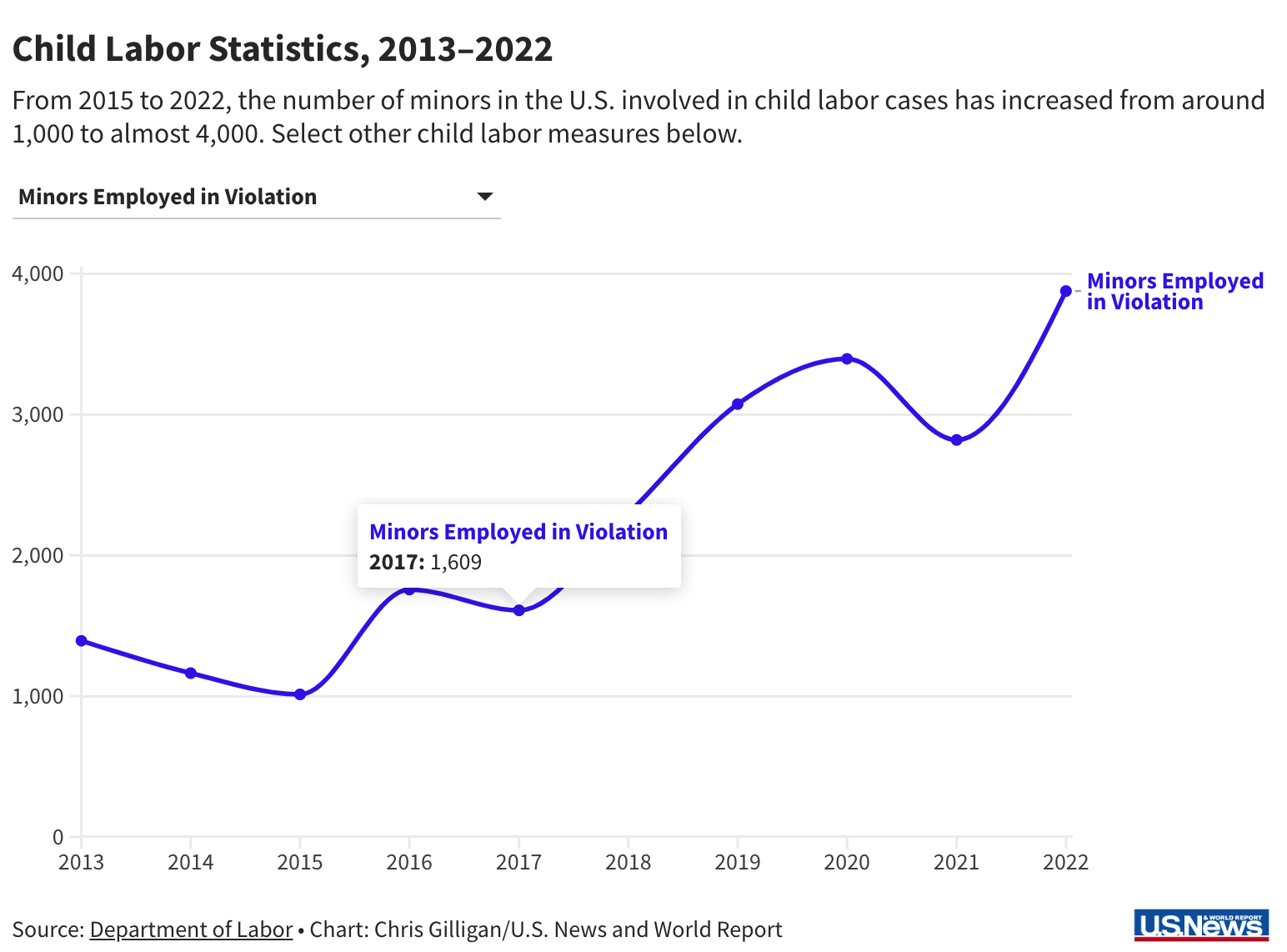Child Labor Violations on the Rise as States Look to Roll Back Laws

As states seek to ease requirements for employing teens, data shows the number of minors involved in child labor violations rose by nearly 300% over seven years
Arkansas Gov. Sarah Huckabee Sanders signs into law an education overhaul bill in Little Rock, Ark. Sanders earlier this year signed legislation removing requirements for age verification and work certificates for employees under the age of 16.(ANDREW DEMILLO/AP-FILE)
Child labor is among the latest hot-button issues in the United States, with multiple states seeking to roll back regulations on when and where teenagers can work.The moves come as the number of minors involved in child labor violations rose 283% from 2015 to 2022, the nonpartisan data center USAFacts reports, based on figures from the Department of Labor. In 2015, just over 1,000 minors were found to be employed in violation of child labor laws – the lowest mark over roughly two decades.By 2022, however, that number had risen to 3,876. Nearly 700 minors were working in hazardous environments illegally.

Individual cases involving child labor violations often involve multiple children. From 2015 to 2022, the total number of cases with violations grew from 542 to 835, according to the Labor Department data – a 54% increase. The average number of children involved in each case increased over the same time, from fewer than two to more than 4.5.The recent trend is a change in course. The 542 cases involving child labor violations in 2015 represented an 83% drop from the more than 3,000 cases in 1999, even as cases ticked back up to top 800 in 2022. Over roughly the same time period, the number of minors involved in child labor violations dropped by nearly 90% from a peak of close to 10,000 in 2001, though that figure also has been ticking back up.Federal child labor regulations include a basic minimum age for employment of 16, restrictions on the working hours and occupation types for 14- and 15-year-olds and protections against hazardous work for these older teens. Employers found to be in violation can be fined up to $15,138 per child – a penalty federal officials have said is too small to be “be a deterrent for major profitable companies.” Lawmakers SucceedThis month alone, the Labor Department announced that a Detroit-area restaurant group had been fined $791 for child labor violations and that a food manufacturer paid $30,000 in penalties for violations at a meat snack plant in Minnesota. In Wisconsin, a 16-year-old’s death at a sawmill has led to a workplace safety investigation, with a referral to the Labor Department for possible child labor violations.Meanwhile, legislators in at least 14 states over the past two years – including Michigan, Minnesota and Wisconsin – have pushed to ease child labor regulations, according to the Economic Policy Institute. Some proposals have been enacted: In March, Arkansas Gov. Sarah Huckabee Sanders signed legislation removing requirements for age verification and work certificates for employees under the age of 16.In May, Iowa Gov. Kim Reynolds signed into law a measure expanding the hours of employment during the school year for teens under 16, permitting 16- and 17-year-olds to serve alcohol under certain conditions and allowing waivers for 16- and 17-year-olds to work where certain hazardous activities are involved as part of an approved program. Notably, the Iowa law appears to differ from federal child labor regulations in at least some aspects. According to the Labor Department, “the law with the stricter standard must be obeyed” when both state and federal laws are applicable to a situation.